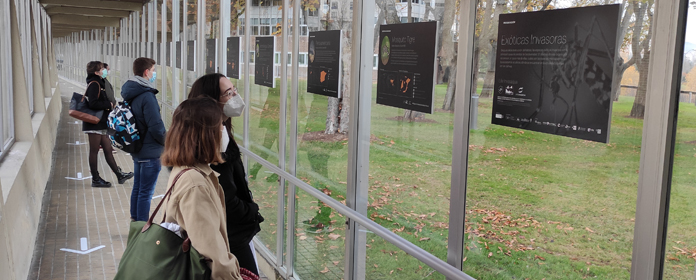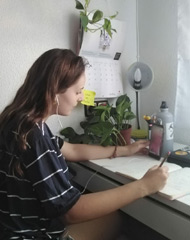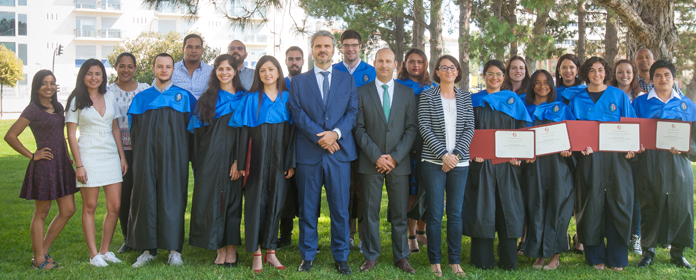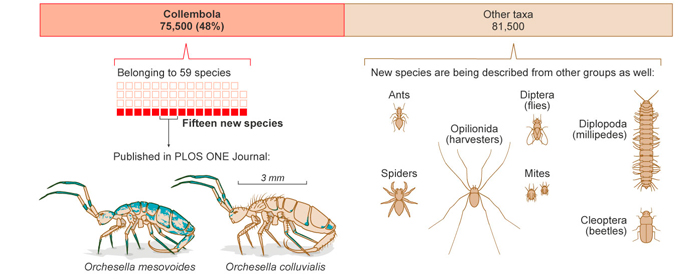Nora Escribano: first Spaniard to win the award International Young Biodiversity Researchers Award
A student of doctorate of the University of Navarra, will receive 5.000 € from the Global Biodiversity Information Facility (GBIF).
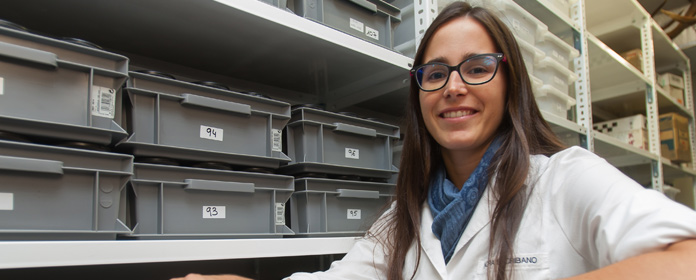
PHOTO: Manuel Castells
Nora Escribano, student of doctorate of the School of Sciences of the University of Navarra, has received the award international award for young researchers granted by the Global Biodiversity Information Infrastructure(GBIF), a network formed by 53 countries and 43 international organizations whose purpose is to make freely and freely accessible data of biodiversity from around the world to support scientific research , promote biological conservation and favor sustainable development .
Based in Copenhagen, this institution has been awarding prizes to a student from Master's Degree and a student from doctorate for their contribution to the study of the world's biodiversity for the past seven years. In 2017 the award to the young researcher of Master's Degree has gone to the Brazilian Itanna Oliveira Fernandes-delInstituto Nacional de Pesquisas da Amazônia (INPA)-and the award to the student of doctorate has been for the first time for a Spanish, Nora Escribano, a graduate in Biology who is in the fourth year of her thesis doctoral at the University of Navarra.Likewise, she collaborates in certain areas with the Real Jardín Botánico-CSIC of Madrid.
Nora's work -which has received a scholarship from the association of Friends of the University of Navarra, financed thanks to donations made by the Friends- has been developed from 1,776 samples of macroinvertebrates (invertebrates larger than 0.02 cm) obtained and analyzed by researcher Javier Oscoz. These samples are kept in the Museum of Zoology (MZNA), part of the Museum of Natural Sciences of the academic center, which houses several million specimens of mollusks, insects, fossils, etc. and is one of the most important collections in Spain.
The value of the information held by museums"The samples from the database that I have prepared," adds Nora, "were taken between 2005 and 2015 at more than 400 points in rivers and streams of the Ebro basin using a standardizedprotocol to reduce errors and optimize comparisons. My role has consisted of extracting the information on these samples -which are part of the monitoring network established by the Ebro Hydrographic Confederation-, preparing them to make them accessible through GBIF, debugging the data, adapting them to international standards and describing the metadata", details the Spanish researcher.
In the opinion of Jesús Muñoz, director of the Royal Botanical Garden and the Spanish node of GBIF, "Nora's work is the latest in a long series of collaborations between our entities, which mutually support each other for the development of joint activities and the exchange of information on biodiversity". In this sense, Nora insists that her work "would not have been possible without the work carried out by museums and centers such as the MZNA or the RJB to house, conserve, share and make public the data and resources on biodiversity".
Species loss is 1,000 times faster today than in the pastThe Young Researchers Award -endowed with 5,000 € for each of the winners- implies the preparation of a article of data, or "data paper", where the set of data is fully described and its publication in an open access journal. "GBIF's purpose in sharing all this information is to facilitate the exchange of data among scientists and provide them with tools that can lead to biodiversity protection policies", emphasizes the researcher.
"The data we have worked on are useful for evaluating the ecological status of freshwater bodies -such as the Ebro River Basin- based on the presence of certain indicator species that help us assess whether the river is healthy or not and whether it has suffered any harmful effects, such as a spill, etc. It is a source of information of great interest for modeling biodiversity patterns and detecting changes and trends in the communities," he explains.
WWF has recently confirmed that the loss of species in the world is 1,000 times higher than the historical rate and that a quarter of the species are in danger of extinction and almost half of them could disappear by the end of the century. "These instructions from data help us to understand what is happening with biodiversity at a global level," emphasizes Nora, who coordinates, together with another student from doctorate, the group Environmental Volunteers of the University of Navarra, which has been promoted for 15 years by students of the center to carry out actions to raise awareness and care for the environment.
About the Zoology Museum of the University of NavarraThe Museum of Zoology (MZNA) -integrated in the Museum of Natural Sciences of the University of Navarra- was founded in 1980 as archive of the zoological materials derived from the research and professor activity of department of Environmental Biology (previously department of Zoology and Ecology). MZNA stores several million specimens in its air-conditioned facilities and is open to researchers from all over the world, making loans and accepting deposits as well as managing and maintaining the Natural History Collections of the School of Sciences of the University of Navarra.
About GBIF Spain and the Royal Botanical GardenGBIF Spain is the Spanish node of the Global Biodiversity Information Infrastructure (GBIF), which makes up-to-date, representative and scientifically valid biodiversity information available to all. Spain is a founding member of GBIF and since 2003 has its headquarters at the Royal Botanical Garden. GBIF's fundamental mission statement is to support biodiversity centers and projects to facilitate their participation in GBIF. Currently, Spain shares through GBIF's network more than 24 million biodiversity records from 88 institutions from all over the country, which places us in eighth place worldwide. Globally, GBIF is the largest network of data of biodiversity in the world. From its portal website it makes more than 800 million records accessible.
The Royal Botanical Garden, founded in the 18th century, is located in the center of Madrid, in the so-called "cultural golden mile" that forms the Prado-Recoletos axis. With an area of 8 hectares, it houses and exhibits an important collection of more than 5,600 species of living plants located in the Garden and greenhouses, following scientific and aesthetic criteria. It also preserves an important historical-cultural heritage. Linked to the committee Superior de Investigaciones Científicas (CSIC), it has three important support units for the research such as the laboratory of Molecular Systematics, the Herbarium and the file and Library Services.

